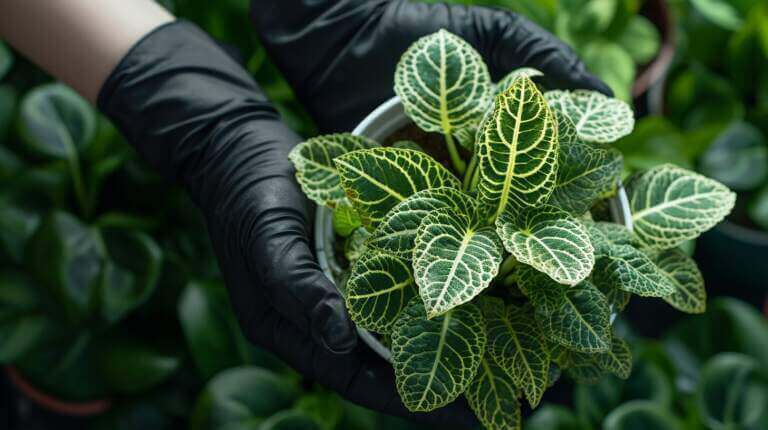Guide to Achieving the Perfect Levels of Humidity for Healthy Parlor Palms(Chamaedorea Elegans,Neanthe Bella Palm)
Welcome to my guide on achieving the perfect levels of humidity for healthy parlor palms. Parlor palms, also known as Chamaedorea elegans, are low-maintenance indoor plants that add a touch of tropical beauty to any space. To ensure their proper care and promote optimal growth, it’s essential to understand the ideal moisture levels and humidity requirements for these beautiful plants.
Parlor palms thrive in warm and humid conditions, reminiscent of their tropical forest floor origins. Maintaining the right humidity levels is crucial for their overall health and growth. They prefer high humidity, which can be challenging to achieve in most indoor environments. However, by following a few care tips, you can create the perfect tropical atmosphere for your parlor palm to flourish.
Key Takeaways:
- Parlor palms thrive in warm and humid conditions similar to their natural habitat.
- Maintaining high humidity levels can be challenging indoors, but it’s crucial for parlor palm care.
- Proper care includes watering, temperature control, and increasing humidity levels for optimal growth.
- Average room temperature between 65-80°F is ideal for parlor palms.
- Regularly misting the leaves or using a humidifier can help increase humidity levels.
Light and Soil Requirements for Parlor Palm Plant(Neanthe Bella Palm)
The Parlor Palm is a versatile houseplant that can adapt to various lighting conditions, making it a popular choice for indoor gardening. It thrives under bright, indirect light, similar to the filtered sunlight it receives in its natural rainforest habitat. This makes it an excellent choice for rooms with large windows or spaces that receive ample natural light.
However, the Parlor Palm can also tolerate low indirect light, making it suitable for areas with less natural light. If you have a room that doesn’t receive as much sunlight, the Parlor Palm can still thrive and add a touch of greenery to your space.
When it comes to the soil requirements for Parlor Palms, they prefer a well-draining sandy soil mix with an acidic to neutral pH. This type of soil allows for proper root development and prevents waterlogging, which can lead to root rot. A recommended potting mix for Parlor Palms includes a combination of peat, sand, and perlite, which provides adequate drainage and essential nutrients for the plant’s growth.
Table: Light and Soil Requirements Overview
| Light Conditions | Soil Type | Soil pH |
|---|---|---|
| Bright, indirect light | Well-draining sandy soil mix | Acidic to neutral |
| Tolerates low indirect light | Well-draining sandy soil mix | Acidic to neutral |
With the right light conditions and soil type, your Parlor Palm can thrive and beautify your indoor space. Whether you have a well-lit room or an area with limited sunlight, the Parlor Palm can adapt and continue to grow, bringing a touch of tropical elegance to your home.
Watering, Temperature, and Humidity Requirements for Parlor Palm(Chamaedorea Elegans)
Proper watering, temperature, and humidity levels are crucial for the health and well-being of your Parlor Palm. Understanding the specific requirements of these factors will ensure that your indoor plant thrives in its environment.
Watering Your Parlor Palm
When it comes to watering your Parlor Palm, it is important to strike the right balance. Overwatering can lead to root rot, while underwatering can cause the leaves to wilt and dry out. To maintain optimal moisture levels, allow the top inch of soil to dry out between waterings. Once the soil is dry, water your plant thoroughly, ensuring that all areas of the root ball are adequately moistened.
Temperature and Humidity
Parlor Palms thrive in warm and humid conditions, simulating their natural tropical forest floor habitat. To provide a conducive environment, maintain a room temperature of 65-80°F. Additionally, high humidity levels are beneficial for your Parlor Palm’s growth. However, achieving high humidity in most indoor environments can be challenging. To increase humidity around your plant, regularly mist the leaves with water or use a humidifier. Creating a tropical atmosphere will create the ideal conditions for your Parlor Palm to flourish.
| Watering | Temperature | Humidity |
|---|---|---|
| Allow top inch of soil to dry out between waterings | Maintain room temperature of 65-80°F | Mist leaves with water or use a humidifier to increase humidity |
| Avoid overwatering to prevent root rot | Create a tropical atmosphere to mimic natural habitat | High humidity levels are beneficial for growth |
Fertilizing and Propagating Parlor Palm Houseplant
When it comes to the care of your Parlor Palm, fertilizing and propagating are two essential aspects to consider. As a slow grower, your Parlor Palm may benefit from occasional fertilization to enhance its overall health and growth. However, it’s crucial to use a balanced liquid fertilizer and avoid over-fertilizing, as this can lead to nutrient burn.
A balanced liquid fertilizer applied during the growing season will provide your Parlor Palm with the necessary nutrients it needs to thrive. Be sure to follow the instructions on the fertilizer packaging for the correct dosage and frequency. Remember, Parlor Palms are sensitive to excessive fertilizer, so it’s best to err on the side of caution and use a diluted solution.
When it comes to propagating Parlor Palms, the preferred method is through division. It’s important to choose a healthy and mature plant for successful propagation. Carefully divide the plant into multiple stems, ensuring each stem has its own set of roots. Repot each stem individually in a well-draining potting mix, and provide appropriate care to encourage their growth.
Propagation through division can be a rewarding process, allowing you to expand your Parlor Palm collection or share the joy of owning this beautiful plant with others. With patience and proper care, the newly propagated Parlor Palms should flourish and add a touch of tropical elegance to any indoor space.
FAQ
What kind of light does a Parlor Palm need?
Parlor Palms thrive under bright, indirect light but can also tolerate low indirect light.
What type of soil does a Parlor Palm prefer?
Parlor Palms prefer a well-draining sandy soil mix with an acidic to neutral pH.
How often should I water my Parlor Palm?
Let the top inch of soil dry out between waterings and then water thoroughly. Avoid overwatering or underwatering.
What temperature and humidity levels are ideal for a Parlor Palm?
Parlor Palms thrive in temperatures between 65°F and 80°F and prefer high humidity levels.
How do I increase humidity for my Parlor Palm?
You can increase humidity by regularly misting the leaves with water or placing a humidifier nearby.
How should I fertilize my Parlor Palm?
Use a balanced, slow-release fertilizer applied during the growing season. Avoid excessive fertilizer to prevent nutrient burn.
How do I propagate a Parlor Palm?
Propagation can be done through division. Choose a healthy and mature plant, carefully divide it, and repot the individual stems with their own set of roots.







